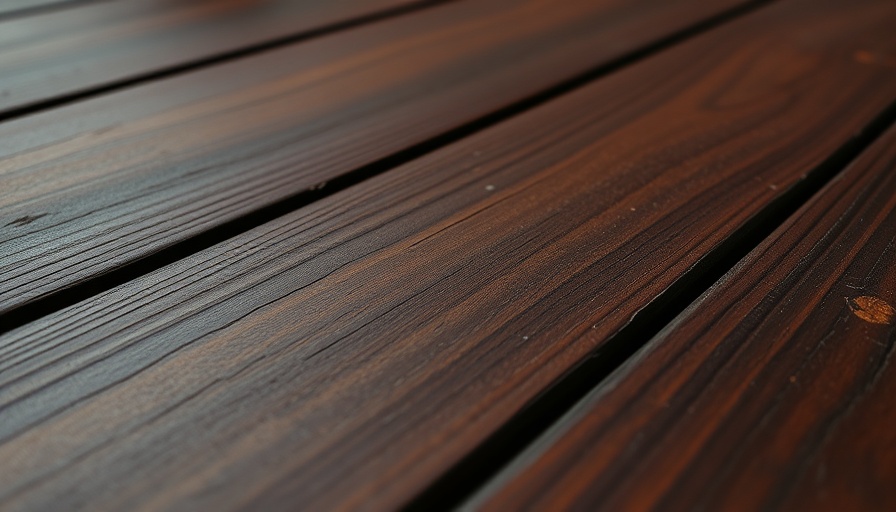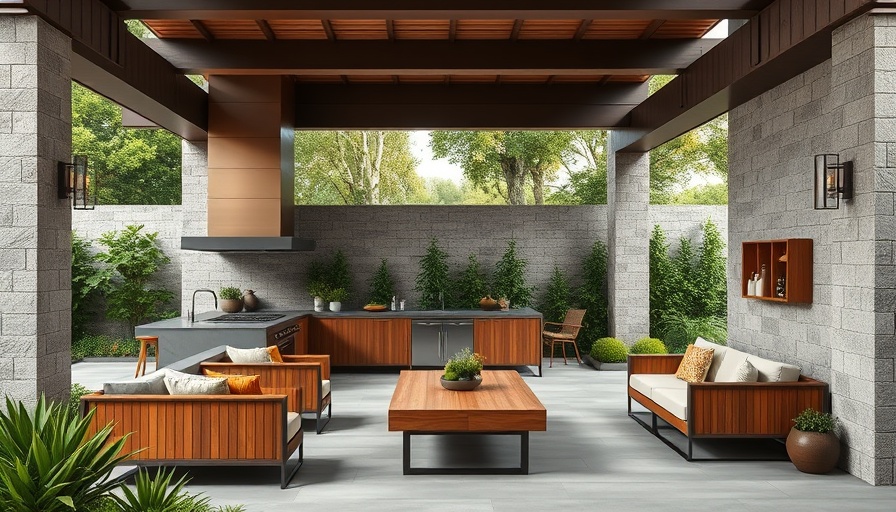
Why You Should Rethink Your Decking Choices
Are you considering decking your outdoor space with one of the most coveted hardwoods— Ipe or Cumaru? If so, you might want to pause and rethink your choice. These once luxurious tropical woods are now categorized as endangered, following their listing on CITES Appendix II during the CITES Conference of the Parties held on November 18, 2022. This decision marks a significant shift in how we view sustainability in design, revealing the urgent need for change in decking choices.
Understanding the Endangered Status of Ipe and Cumaru
Why have Ipe and Cumaru found themselves on this endangered list? The answer lies within the fragile ecosystems from which they are sourced. Ipe trees, for instance, take a staggering 100 years to grow to a mere 12 to 24 inches in diameter. When we consider the need for six-foot logs for commercial use, it becomes clear that sustainable harvesting is simply impossible. These trees not only face threats from logging but also from the destructive practices of land clearing, which obliterate biodiversity and endanger entire species.
A Historical Look at Sustainable Timber Practices
For years, the narrative surrounding Ipe and Cumaru has been shrouded in sustainability claims, supported by certifications such as the Forest Stewardship Council (FSC). However, the reality has unveiled a different story—growth rates are too slow, replanting efforts often falter, and logging harms the land. As consumers become more aware of these truths, the antiquated notion that harvesting these hardwoods was sustainable is rapidly losing credibility. To continue to specify them is to cling to a tradition that no longer holds water.
Shifts in Client Demand and Designer Choices
Despite growing awareness, many architects and designers still opt for Ipe and Cumaru. The reasons? Tradition, a long-standing reliance on these materials, and client demands often sparked by misconceptions about quality. As luxury begins to change its definition, the burden rests on the shoulders of specifiers to lead by example and prioritize environmental sustainability over mere aesthetics.
Innovative Alternatives for Sustainable Decking
So, what can homeowners do if they want the beauty of wood without the environmental cost? There are several innovative alternatives that cater to both aesthetics and sustainability. Accoya, for instance, is a modified wood derived from Radiata pine that promises remarkable durability combined with a 50-year above-ground warranty. Similarly, Kebony offers a softwood alternative treated with bio-based liquids to mimic the attributes of hardwood. These options provide excellent longevity, beauty, and a clear conscience for eco-minded homeowners.
The Benefits of Composite Decking
If wood is not a strict requirement for your decking, you might also consider composite materials. With the look of traditional wood but with enhanced durability, composite decking materials are engineered to withstand the elements and require less maintenance. Investing in composite decking allows you to create a beautiful outdoor space without the ethical dilemma associated with tropical hardwoods.
Looking Ahead: The Future of Decking
The future of decking choices should lean heavily toward sustainability. Why not opt for materials that not only enhance your home but also protect our planet? As awareness builds around climate change and the importance of biodiversity, it’s essential for homeowners to reassess their choices and take a stand against materials linked to the destruction of rainforests. The landscape is changing, and it’s time we respond by choosing options that reflect our commitment to environmental standards.
Take Action for a Sustainable Home
As you embark on your decking project, remember that your choices matter. Opt for a decking solution that prioritizes sustainability while still providing that luxurious touch you desire. Explore options like Accoya, Kebony, or composite decking innovation that can meet your needs without jeopardizing the well-being of our ecosystems. By making informed choices, you can enjoy a stunning outdoor space without the harmful environmental impact.
 Add Row
Add Row  Add
Add 


Write A Comment